If Mardi Gras is on your bucket list, but New Orleans seems overwhelming for your little ones, (or for you) consider lovely Lafayette. Only 217 kilometres (135 mi.) from the Louis Armstrong New Orleans International Airport, Lafayette is a city of 127,000 folks who put ingenuity and heart into their local Mardi Gras parades. It’s a down-home Mardi Gras, done country style to the beat of brass bands, crying Creole violins and toe-tapping Cajun rhythms.
Mardi Gras Magic Begins
The day before Lent begins is known as Mardi Gras or Fat Tuesday, and it’s the 46th day before Easter. In Lafayette, they start the party two weekends before, but I arrived on the Friday before Fat Tuesday to find a small, colourful and clever evening walking parade rolling through town on people power – on foot, by bicycle, trailer or shopping cart. Made up of small independent groups called “krewes”, this was a not too serious intro to Mardi Gras made up of people with a wacky sense of humour. There were costumes of all kinds from bumblebees to Teletubbies, lots of flashing lights and joyful jazz from the New Music Natives Brass Band. I followed the Krewe de Canailles (Rascals) as they danced along the parade route tossing environmentally friendly “throws” to eager families. Throws are usually plastic beads, but at this parade, they were wooden coins. The parade wound up at Warehouse 535 where a local band, the Grammy-winning Lost Bayou Ramblers, were shaking the rafters with zydeco and packing the dance floor at an adults-only Mardi Gras ball.
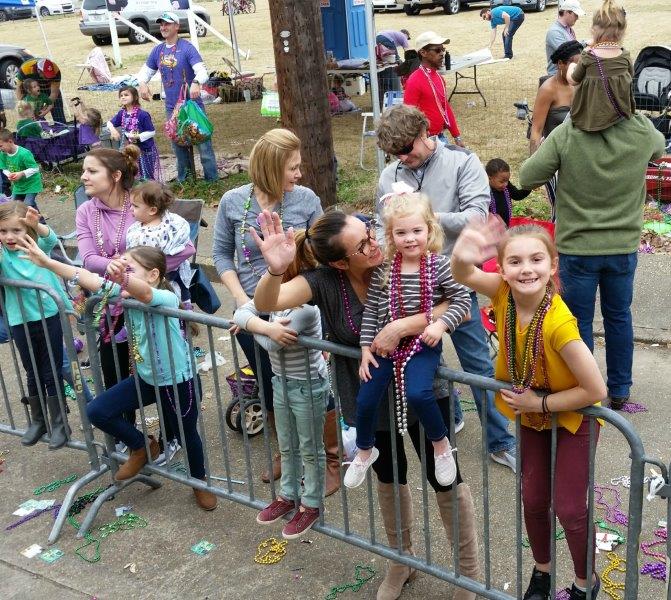
Day or night, everyone loves a parade – photo Debra Smith
Rules of the Route
In Lafayette, they say that if you can still stand up straight, you don’t have enough beads. If you want to score the maximum amount, here are a few tips. The major parades with huge, colourful floats and marching bands like the Queen Evangeline and King Gabriel’s parades, run at different times during the day and evening except on Sunday. You can find a parade schedule at the Lafayette Travel website. Parking is free on the side streets at parade time.
Download the Mardi Gras Parade Tracker app and search for Lafayette. It’ll show you the parade route and when the next floats are arriving. You’ll hear them well in advance blasting rock and roll, rap or disco music. Give a cheer for the local marching bands too. They march, and the parade rolls, in every kind of weather.
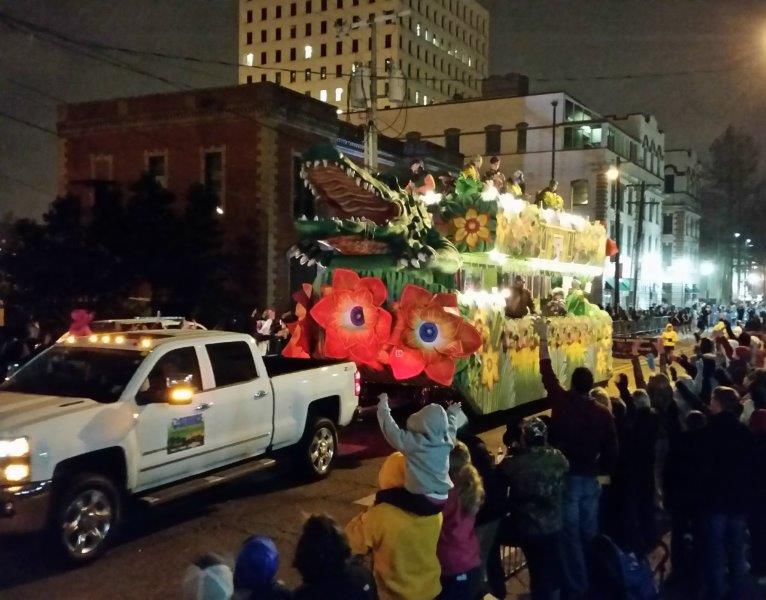
The parades roll on in every weather – photo Debra Smith
Pick a spot near the barricades, close to where the floats pass. It’s harder for people on the floats to toss long distances, so avoid corners where the floats make their turns. The middle of the route is best because sometimes an overly enthusiastic krewe will run out of beads before the parade is over.
Make eye contact and watch out for stray throws. No one wants to get hit with a bunch of beads – they can really hurt. Remember that most floats have a top floor so look up too. Keep an eye out for hula hoops, stuffed toys and strings of beads with added bling, like coins or toys. Those are the keepers.
It doesn’t hurt to make a sign like “We came all the way from Canada” or “Will Trade My Sister for Beads”, and yelling is pretty much mandatory. The signature Mardi Gras shout is “Throw me something, mister”.
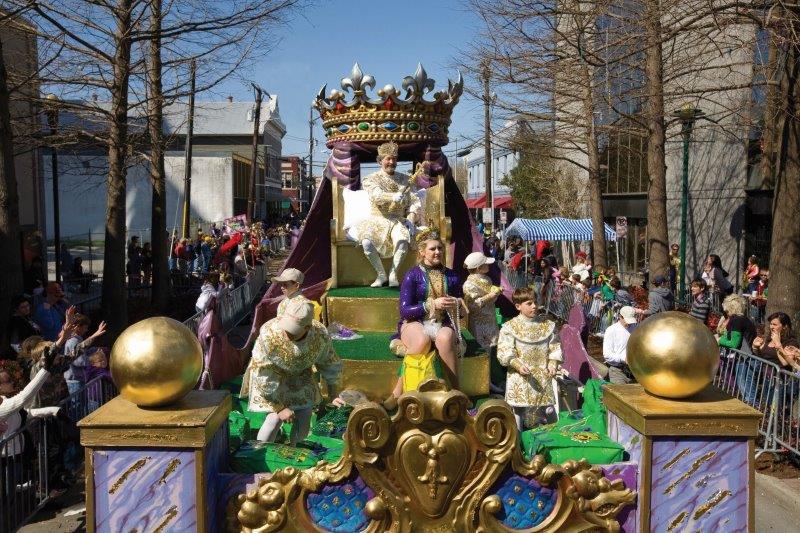
The King Gabriel float draws a crowd in Lafayette – photo Philip Gould Lafayette Travel
Bring some shopping bags to stash your loot. No one stops to admire beads until the last float has passed. After that, it’s time to sort through your treasures and deposit unwanted beads into the blue recycling bins behind the barricades. Most of the strings will be reused next year through recycling, donations to charities and garage sales. You’ll notice that no one picks up bead necklaces that hit the ground. Some people call them “dead beads” and think they bring bad luck. Or maybe they just don’t want to take their eyes off the floats and the next flying prize.
Kids can safely enjoy all the day and evening parades. The emphasis in Lafayette is on family-friendly fun. There is plenty of security and emergency services on hand if needed. Organizers suggest that you pin a note with your child’s name and your contact information to their clothes or tuck it in their pocket just in case you get separated, but the crowds are usually only a few rows deep, and people don’t tend to move once they pick their spot.
Down Home Mardi Gras in Eunice
There are many rural parades with a distinctly different theme that dates back centuries. The Eunice Lil’ Mardi Gras is held about an hour out of Lafayette in Eunice, LA. Participants don traditional costumes, masks and pointed hats, also known as capuchons, and ride or walk from house to house soliciting “donations” of food items, culminating in a community-wide feast of gumbo. This procession or “run” features a ceremonial chicken chase. Children can get in on the fun as well. The Eunice Lil’ Mardi Gras is a chicken run held for children and teens ages 0-14. Registration takes place at the Eunice Rec Complex at 8 a.m. and costs $15 US per child.
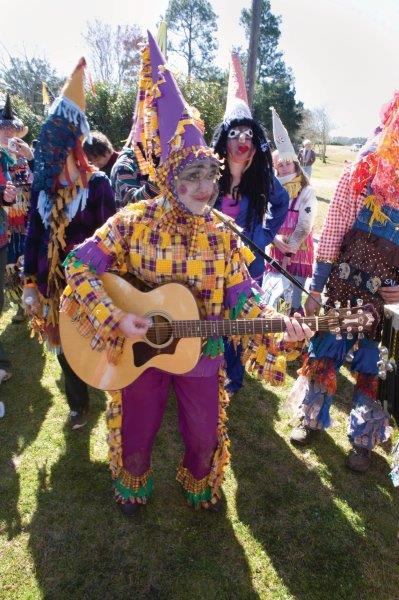
The Eunice L’il Mardi Gras boasts colourful costumes and a kids chicken chase – photo Philip Gould Lafayette Travel
One last tip: there’s no parade on Sunday so you might want to make your way to Vermilionville Living History Museum and Folklife Park. Scattered along the Bayou Vermilion, you’ll find a collection of historic houses dating from 1765 to 1890 with costumed interpreters demonstrating everything from spinning wheels to wood carving. It was in villages like this that the Acadians started their new lives after arriving from Canada. Drop in to hear the fiddles playing and do a two-step at La Salle de Danse Performance Center. You’ll feel right at home.
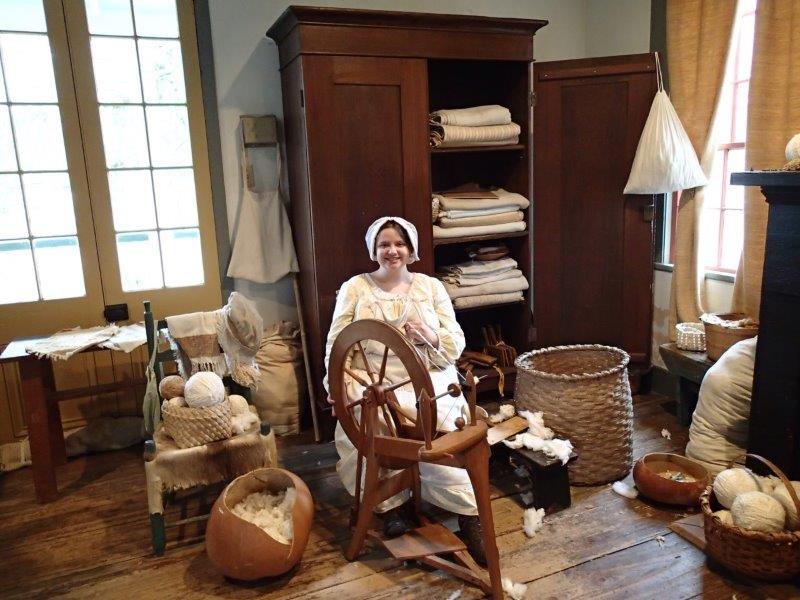
Acadians learned to spin cotton instead wool in Vermilionville, later named Lafayette – photo Debra Smith
River Road Rendezvous:
Plan your drive to Lafayette along the scenic Great River Road and learn about Louisiana’s rich history and culture along the way. Houmas House Plantation and Gardens is the quintessential southern mansion with tall white columns and massive live oaks draped in Spanish moss. Explore the lives of privilege and pleasure enjoyed by wealthy landowners in the 1800’s on a guided tour. At Laura Plantation, discover a more modest plantation run by Creole women, whose ancestors were west Europeans, west Africans, and Native Americans and whose class, not race, determined their place in society. The Whitney Plantation in Wallace opened in 2014, and it’s the only plantation museum in Louisiana that focuses on the history of slavery, telling the story of enslaved peoples in America in their own words. Deeply researched and artfully presented through artefacts, sculptures and restorations, this museum is a must-see.
Stay at: Doubletree by Hilton Lafayette
Dine at: Blue Dog Cafe; The French Press; Dat Dog
For more information: Lafayette Travel
The writer was a guest of Lafayette Travel. Questions about Lafayette are welcome. Follow her on Instagram @where.to.lady and on her website Wheretolady.com. As always, her opinions are her own.





